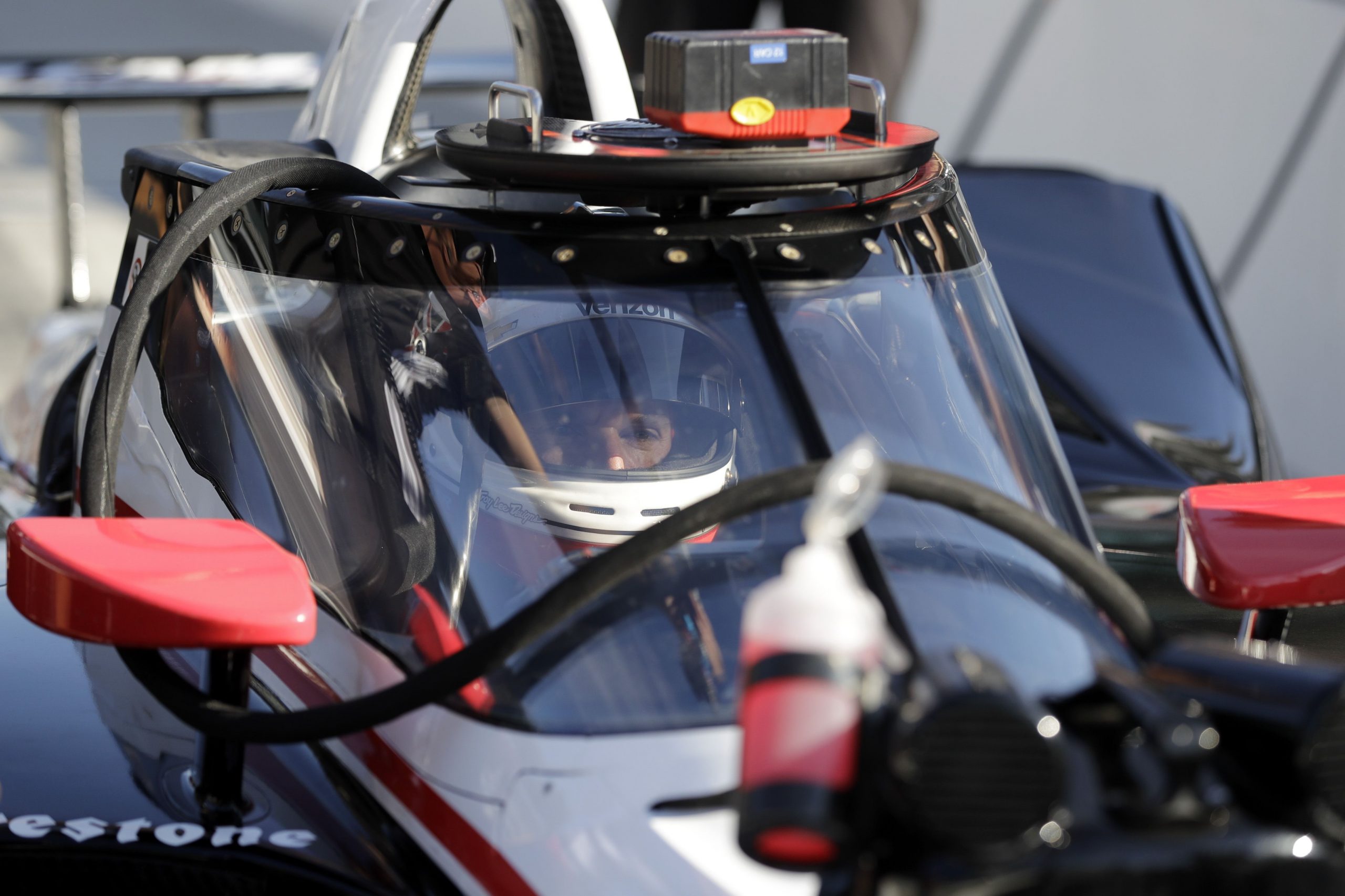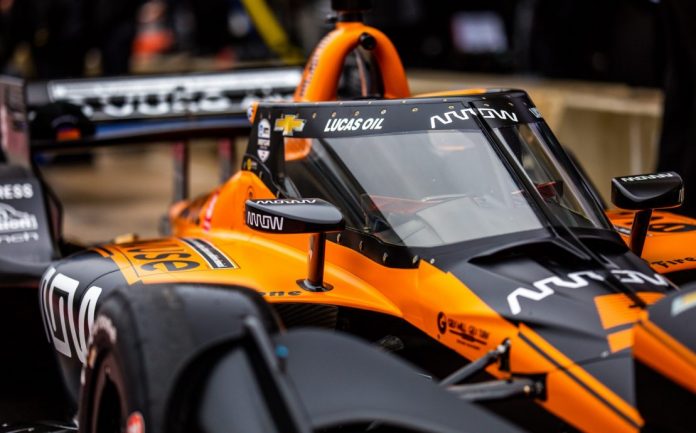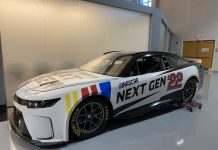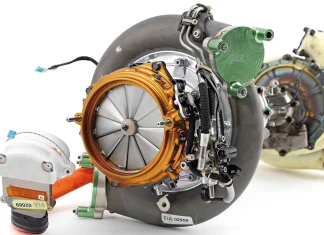The NTT IndyCar Series has modified its rulebook in reaction to the need for servicing its new aeroscreen during pit stops. With the cockpit-mounted driver safety device subject to receiving the same fluids, rubber marks, and dirt that strike windshields in other forms of racing, IndyCar has created a new ‘aeroscreen attendant’ role while servicing each entry in competition.
Adding to the traditional use of six over-the-wall crew members, where four change tires, one refuels, and the sixth handles the rear-mounted air jack, the series will allow a seventh person to interact with the car for the sole purpose of cleaning the aeroscreen or removing tear-offs.
Unlike a stock car or sports car, where a large, single tear-off is torn away by a crew member, the central spine running down the middle of the laminated PPG aeroscreen requires the use of two tear-offs, positioned on both sides of the spine.
The aeroscreen attendant is only allowed to serve a limited role during pit stops. According to Rule 7.10.4.5, they “must remain sitting, standing or behind the pit wall until the car comes to a complete stop in its pit box, may only perform work while car’s rear tires are elevated, may perform no additional work outside of aeroscreen cleaning and/or removal of aeroscreen tear-offs, and must remain in control of any tear-off materials at all times.”
Wedged between the front tire changer and the refueler, the aeroscreen attendant is meant to perform their tasks and quickly remove themselves from the rest of the pit stop sequence. Per Rule 7.10.4.5.1.6, “upon completion of work, aeroscreen attendant is required to return immediately to the cold side of the pit wall.”

The effort required by each IndyCar team to nominate and train each entry’s aeroscreen attendant, integrate that crew member into pit stop practice, and identify the best practices for applying tear-offs to the aeroscreens prior to on-track sessions is surprisingly detailed.
“It’s a bit of a foot dance,” Andretti Autosport assistant team manager Josh Freund told RACER. “Some will be new people going over the wall for us. And we use tire helpers to clear that tire coming off the car, so there’s the guy on the front tire, the refueler, someone doing the aeroscreen, and someone behind them taking a tire away, so it could get busy.”
With tear-offs in place, the disposable adhesive plastic pieces protect the aeroscreen from pitting and other harmful or obstructive items that would otherwise make viewing of the road ahead less clear. Freund says the strategy of stacking a thick assembly of tear-offs on the aeroscreen might sound like the best plan, but each driver will need to offer input on the upper limit.
For standard-length races, three to four could suffice. For the Indy 500, the longest race of the year, an alternate plan might be required. Drivers could run through their tear-offs before the end of 200 laps with somewhere between six to eight pit stops to complete, forcing the aeroscreen attendant to leave the last tear-off in place to protect the aeroscreen and begin using a cloth cleaning agent to remove as much debris as possible. Teams won’t have answers until they get a feel for how many tear-offs can be tolerated by their drivers, and if the number is high enough to complete the race without manual cleaning.
It all depends on how many tear-offs a driver can see through, and how long it will take the attendant to clean the aeroscreen by hand during pit stops that last 10 seconds or less.

“We tried starting out with seven tear-offs at the Barber aeroscreen test with Ryan Hunter-Reay, and he came in and said we had to remove some because the distortion was too much,” Freund added. “What tires do we have this weekend, what kind of marbles will we have, is someone dropping fluid? There’s a lot to consider.
“It’s something to test right away at Indy. Maybe you start with 10 and see if they can see through them, and if not, how many you go with? How many tear-offs we can install before distortion happens? We’ll need to test and learn on the fly before we get to the race, and I bet everyone will be doing the same thing.”
Based on the pit stop practice Freund’s teams have done with the aeroscreen attendant in motion, the tear-off process has been remarkably fast.
“For what we’ve timed so far, it’s about half the time of a full stop — 3.5 or 4 seconds — to do the aeroscreen, so that’s good,” he said. “It’s harder to say if it’s a short fill, or tires only, so that’s another thing to work out in practice.”
A day of ‘tear-off school’ education was recently held by IndyCar where teams sent crew members to learn the art of applying tear-offs to an aeroscreen. While the time needed perform the installation of multiple layers takes little more than an hour, the time required for those layers to fully settle and eliminate bubbles can last upwards of one day, according to a few crew chiefs.
Some teams are planning to keep two aeroscreens in active service, with one primed and reserved for race day while the other is deployed throughout practice and qualifying. Owing to the long lead time for tear-offs to settle after installation, teams will need to actively manage the consumption rate of tear-offs and plan well in advance to have new tear-offs applied and ready for action the next day.
read more here













